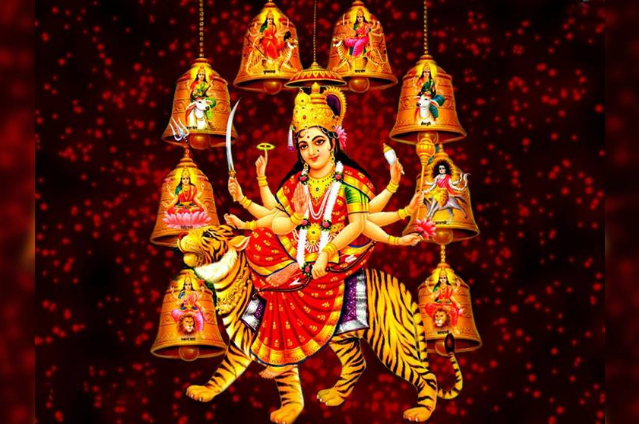India is a land of diverse cultures and traditions, where festivals hold a special place in the hearts of its people. One such festival that embodies the essence of knowledge, wisdom, and the arrival of spring is Saraswati Puja. Saraswati Puja, also known as Vasant Panchami, marks the onset of Vasantha Navaratri, a nine-night celebration dedicated to the goddess Saraswati. This article explores the significance of Saraswati Puja, the ritual of Navathaniyam, and the concept of the nine gems (Navaratna) and how they hold profound importance in the lives of Indians.
Saraswati Puja: The Celebration of Knowledge and Wisdom
Saraswati Puja, celebrated on the fifth day of the bright half of the Hindu lunar month of Magha, usually falls in late January or early February. This auspicious day is dedicated to Goddess Saraswati, the embodiment of knowledge, wisdom, art, and music. Devotees across India, especially students, teachers, and artists, pay homage to her on this day.
The significance of Saraswati Puja lies in its emphasis on the pursuit of knowledge and wisdom. It is believed that on this day, Goddess Saraswati graces her devotees with her blessings, which in turn enhances their intellectual capabilities and artistic talents. Schools, colleges, and educational institutions often organize special ceremonies, where books, musical instruments, and art supplies are placed in front of the deity, seeking her blessings for successful learning and creativity.
Vasantha Navaratri: Welcoming the Spring
Saraswati Puja also marks the beginning of Vasantha Navaratri, a nine-night festival that celebrates the arrival of spring. 'Vasantha' means 'spring,' and 'Navaratri' translates to 'nine nights.' This festival typically falls in the months of January-February and is observed with great enthusiasm in different parts of India, particularly in the southern states.
During Vasantha Navaratri, devotees worship Goddess Saraswati for nine consecutive nights, offering prayers, performing rituals, and seeking her blessings. Each day is dedicated to one of the nine forms of the goddess, and devotees often decorate their homes with colorful flowers, light lamps, and create beautiful rangoli designs to welcome the spring season.
The word "Navam" not only means Nine alone, but also have one more meaning "New". If you want to learn any new things, then Navaratri is the right time.
One of the most important rituals observed during Vasantha Navaratri is the offering of Navathaniyam. The term 'Navathaniyam' comprises two words: 'Nava,' meaning 'nine,' and 'Thaniyam,' referring to 'grains.' Navathaniyam is a symbolic offering of nine different types of grains and legumes to the goddess Saraswati. These grains represent the abundance of nature and the importance of agriculture in Indian culture.
The nine grains included in Navathaniyam are:
- Wheat
- Rice
- Jowar (Sorghum)
- Maize
- Bengal Gram (Chana)
- Green Gram (Moong)
- Black Gram (Urad)
- Horse Gram (Kulith)
- Barley
Devotees believe that offering these grains to the goddess signifies their gratitude for the bountiful harvest and invokes her blessings for a prosperous agricultural season ahead. These grains are carefully cleaned, placed in an earthen pot or vessel, and offered to the deity during the Saraswati Puja and Vasantha Navaratri celebrations.
Navaratna: The Nine Gems of Life
In addition to the Navathaniyam ritual, the concept of Navaratna, or 'nine gems,' holds great importance in Indian culture. Navaratna refers to a set of nine precious gemstones, each associated with a specific planet, and is believed to bring good fortune and positive energy to the wearer. These gemstones are considered symbolic of various virtues and qualities, making them highly significant in the lives of many.
The nine gems and their associations are as follows:
- Ruby (Manikya) - Associated with the Sun, symbolizing power and leadership.
- Pearl (Moti) - Associated with the Moon, symbolizing emotional balance and purity.
- Red Coral (Moonga) - Associated with Mars, symbolizing courage and vitality.
- Emerald (Panna) - Associated with Mercury, symbolizing intelligence and communication.
- Yellow Sapphire (Pukhraj) - Associated with Jupiter, symbolizing wisdom and prosperity.
- Diamond (Heera) - Associated with Venus, symbolizing beauty and love.
- Blue Sapphire (Neelam) - Associated with Saturn, symbolizing discipline and focus.
- Hessonite Garnet (Gomed) - Associated with Rahu, symbolizing protection from negative energies.
- Cat's Eye (Lehsunia) - Associated with Ketu, symbolizing intuition and spiritual growth.
People often wear jewelry adorned with these gemstones to harness the positive energies associated with each planet and promote various aspects of their well-being, from health and prosperity to love and wisdom.
Saraswati Puja and Vasantha Navarathri are not only religious celebrations but also cultural festivals that symbolize the significance of knowledge, wisdom, creativity, and the renewal of life with the arrival of spring. The rituals of Navathaniyam and the concept of Navaratna further enrich these festivities, highlighting the interconnectedness of spirituality, nature, and human life in India.
As devotees come together to worship Goddess Saraswati and honor the nine grains and gems, they not only seek blessings but also reinforce their commitment to lifelong learning, artistic expression, and the pursuit of wisdom. These traditions serve as a reminder that the essence of life lies in continuous growth, creativity, and the celebration of the natural world around us. Saraswati Puja, Vasantha Navaratri, Navathaniyam, and the concept of Navaratna collectively contribute to the rich tapestry of Indian culture, weaving together spirituality and everyday life in a harmonious and meaningful way.

